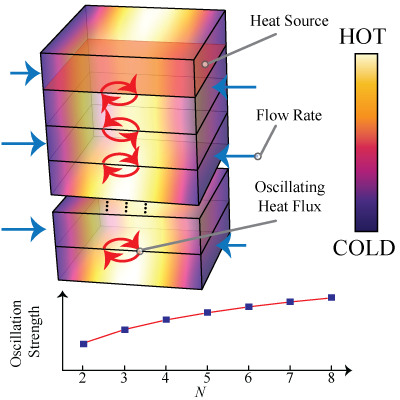
Cutting-edge research conducted by Assistant Professor of Electrical and Computer Engineering (ECE) Alessandro Alabastri and his team has paved the way for groundbreaking advancements in energy processes and thermal management. Focusing on the interaction between light and nanomaterials, the research has led to the development of novel optical devices and enhanced energy efficiency.
Alabastri, the principal investigator, uses nanostructures to modify how electromagnetic fields interact with various materials. This ability to engineer nanoscale systems empowers them to manipulate the absorption, reflection, and transmission of different wavelengths of light. Consequently, this tailor-made approach opens up exciting possibilities for various applications, from optoelectronics to thermofluidics.
The team's recent breakthrough revolves around thermal energy storage and transfer, two fundamental processes with significant implications for heating, cooling, and driving chemical reactions. Through their work, they have uncovered an intriguing phenomenon.
"Our work shows how thermal transport in systems composed of fluids exchanging heat with each other exhibits properties of oscillators," explains Alabastri. “Similar to a swing moving back and forth when properly pushed, we found that heat follows periodic dynamics across the fluids if they flow at the right velocities.”

The discovery of thermal oscillators in fluidic systems has captured the attention of researchers worldwide, as it offers an innovative approach to thermal energy management. "These thermal oscillations allow us to reuse heat that would otherwise be lost," explains Stephen (Keith) Sanders, postdoc researcher and co-author of the article. Understanding and harnessing these oscillatory properties makes significant improvements in the efficiency of heat exchange processes, which can potentially revolutionize various energy-related applications, from thermal desalination to solar thermal processes.
Qian Ye, graduate student and co-author of the article explains that “the utilization of coupled heat oscillations emerges as a powerful instrument for optimizing heat flux exchange within thermal systems in our study. Intriguingly, this optimization transcends the conventional focus on maximizing system temperature, unveiling groundbreaking pathways for proficiently managing heat in a wide array of applications that demand meticulous heat storage and precise control overheat exchange and accumulations. “As the world grapples with water scarcity and increasing energy demands, the implications of their research on thermal desalination are genuinely game-changing. Energy efficiency is paramount in the quest for freshwater extraction from saline water.

"Our research shows how maximizing the total heat exchanged among fluids is possible by coupling several flowing flows in parallel as multiple heat oscillators, continuously recycling the heat utilized in the process," said Alabastri.
Here, heat exchange between two flowing fluids plays a crucial role. This finding can potentially revolutionize the design of decentralized and efficient thermal desalination systems, making freshwater extraction from saline water more sustainable and energy-efficient.
The potential of these findings extends even further, with ramifications for solar applications.
"Heat can be continuously exchanged between fluids even if only one stream is directly heated,” said Alabastri.
By leveraging this insight, multiple solar thermal processes can be operated using stacked fluidic channels without increasing the system's physical footprint. This has tremendous implications for solar energy harnessing, paving the way for more efficient and compact solar thermal systems.
Looking ahead, the research team is determined to explore various configurations beyond vertical stacking and delve deeper into the possibilities of utilizing these systems as highly efficient thermal batteries. As we strive to address the challenges posed by climate change and energy demands, the potential impact of such pioneering work cannot be overstated. The fusion of nanomaterials, light, and thermofluidics could shape the future of energy technology and pave the way for a more sustainable tomorrow.
With ongoing exploration into further configurations and utilizing these systems as thermal batteries, the future holds exciting possibilities, offering hope for a brighter, more sustainable world for future generations.

